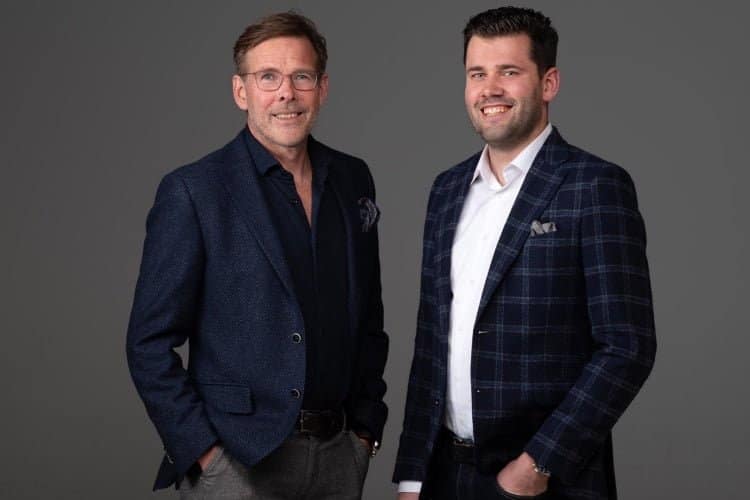Hayk Simons of ATIR, HTC Advies and Consumatics and his son Stephan share a passion for hospitality and facility. Last year, Stephan joined his father’s project: Grip Facility. They share a strong opinion: it is time for a thorough digital transition.
Hayk started his entrepreneurship more than 20 years ago with the acquisition of HTC Advies. In 2008 he added ATIR Netherlands and ATIR Belgium and thanks to the most recent acquisition of Consumatics, the organization now offers a total package of services in the field of Hospitality, Facility and consumer behavior research. Hayk is now doing business together with managing partners Puck Wilbers, Margriet van Dijken, Marieke Weerts and Anna Casemier in the Netherlands and with Ferenc van der Sterren in Belgium.
Digitization within facility management
Stephan has his father’s entrepreneurial genes. He started his career in web development, in which he mainly focused on the commercial development of websites and webshops. In 2015 he took the step towards facility management. At facility service provider Asito, he first proved himself as a project manager and then soon as a branch manager. The perfect combination of experience and interest, it turned out later, because it fitted seamlessly with the new route that Hayk had in mind within facility management: digitization.
Innovative ideas
Father and son share the conviction that the facility world must change. Together they are full of innovative ideas and they are working on a digital and technological transition within facility management. While Hayk has years of experience in the intermediary consultancy world, Stephan is on top of state-of-the-art software development. Stephan: “Hayk has the right experience from the past and therefore knows better where we come from than I do. He is open to innovation and has a vision, to which I contribute in knowledge, skills and innovation.”
What is the difference between then and now?
Hayk: “In the past, cleaning in facility management in particular was really a cowboy world. I was surprised then. In 2011 I therefore wrote the article ‘From mistrust to trust’. It struck me that the clients were cutting back at that time (during the financial crisis) and that cleaning companies scored unrealistic contracts as a result, as a result of which the cleaning employees came under increasing pressure. After all, they had to implement those unrealistic contracts. It was a straight one
price war.”
Hayk noticed a negative spiral, in which the focus was certainly not on improving services and innovation. Stephan also sees that the forces of market forces within facility management are mainly aimed at short-term results without sufficiently monitoring quality and cooperation in the long term.
Code of Responsible Market Conduct
After strikes by cleaning services, the Code of Responsible Market Behavior was created in 2011. Hayk represents the intermediaries on the board of the code and has a seat in the catering code room. Hayk: “The code emphasizes quality and the social aspect instead of price. This is the start of a clear, fruitful collaboration between client, supplier and intermediary, in which we attach great importance to the interests of the facility employee. Research shows that the code is effective, but that there is still a lot of dissatisfaction and negativity among suppliers, clients and independent intermediaries. The employees are often the victims of this.”
Agreements still not fulfilled
In practice it appears that agreements are often still not fulfilled. According to Hayk and Stephan, it is an ‘open goal’ to improve contract management so that cooperation between stakeholders improves. Hayk: “Due to the code, the term of the contracts has become longer, but the agreements, converted into Key Performance Indicators (KPIs), are still insufficiently measured and fulfilled. This creates ambiguity, dissatisfaction and miscommunication. This dissatisfaction leads to high indirect costs for both the client and the supplier. Just look at the level of management costs at suppliers.” An excellent opportunity for improvement.
Benefits of digitization
Hayk and Stephan therefore joined forces and have been focusing on digital innovation ever since. Hayk: “We see an opportunity here for better collaboration between stakeholders: clients, suppliers, employees and intermediaries. Digitization and the use of data offer solutions to current problems and promote cooperation between the parties. In addition, indirect (management) costs are strongly reduced, which benefits employee satisfaction, quality of work, efficiency and innovation.”
Improvement of cooperation possible
A digital platform on which all contract agreements and agreed KPIs are clearly displayed offers a solution. “A platform with open APIs (application programming interfaces) in which data is accessible to all parties involved. This ensures transparent cooperation between the parties. The platform shows the degree of satisfaction among customers, employees, clients and suppliers, as well as KPIs such as technical ones
quality, hygiene, communication and costs,” says Hayk. “The focus is really on contract management. Data is collected for the client, so that regardless of which supplier he chooses, he has access to all data. The goal is to realize as many links as possible between all parties, so that decisions are made on the basis of data,” says Stephan.
Artificial intelligence and blockchain
Both Stephan and Hayk realize that they are in the early stages of their digital journey of discovery and still see enormous opportunities thanks to technological developments such as Artificial Intelligence and blockchain technology. Stephan: “Clients and cleaning companies are looking for the most efficient way of digitization. Tasks such as keeping track of changes and calculations and requesting extra work have all been digitized. Much more is possible. This is just the beginning.”
“These are exciting times, but above all we see plenty of opportunities that we want to actively capitalize on.” says Hayk. Finally, Stephan: “One thing is certain: facility management needs a new model. Time for further digitization!”

